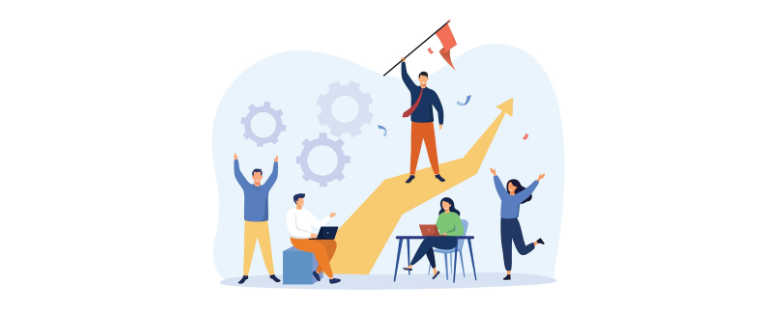
How to Simplify Employee Training with an LMS
In today’s fast-paced business environment, effective employee training is crucial for maintaining a competitive edge. However, many organizations find themselves bogged down by complex, outdated training methods that can overwhelm staff and fail to deliver desired results. Enter the Learning Management System (LMS) — a powerful tool designed to streamline and enhance training processes. By consolidating training materials, tracking progress, and providing customizable learning paths, an effective LMS can transform employee training from a cumbersome task into an efficient, engaging, and productive experience. In this blog, we’ll explore how you can leverage an LMS to simplify your training programs, ensuring your team is equipped with the skills they need to thrive.
Understanding LMS Benefits
A Learning Management System serves as a centralized platform that not only delivers educational content but also tracks and reports on training outcomes. Here’s how an LMS can simplify and enhance the employee training process:
1. Centralized Content Management
- Ease of Access: All training materials are stored in one place, allowing employees to access them anytime, anywhere.
- Consistency: Ensures all employees receive the same quality of information, eliminating discrepancies and knowledge gaps.
2. Personalized Learning Experience
- Self-Paced Learning: Employees benefit from the flexibility to complete training at their own pace, accommodating varying learning speeds and styles.
- Customizable Modules: LMS platforms allow customization of training modules to suit specific organizational needs, ensuring that every employee receives targeted training without unnecessary content.
3. Automated Reporting and Tracking
- Performance Metrics: Automatically track employee progress and identify areas of improvement.
- Feedback Mechanisms: Utilize quizzes and assessments to provide instant feedback and ensure comprehension.
4. Simplifying Administration
- Seamless Integration: An effective LMS integrates smoothly with existing HR software, simplifying administrative tasks and maintaining consistency across platforms.
- Reduced Paperwork: Digital records and automated workflows reduce manual paperwork, freeing up administrative resources for more strategic tasks.
5. Enhancing Engagement and Motivation
- Gamification: Incorporating gamification elements such as badges and leaderboards can increase motivation and engagement, transforming training into an enjoyable experience.
- Interactive Elements: Incorporate videos, quizzes, and interactive scenarios to make learning more engaging and effective.
Key Features to Look for in an LMS
When selecting an LMS, consider these essential features to maximize efficiency and effectiveness:
- User-Friendly Interface: An intuitive interface is crucial for encouraging employee engagement and reducing learning curves.
- Mobile Compatibility: Ensure the LMS is accessible on mobile devices to support learning on-the-go.
- Integration Capabilities: The LMS should easily integrate with existing HR and management systems to streamline operations.
- Security Measures: Robust security protocols are essential to protect sensitive company data and employee information.
Implementing an LMS: Best Practices
1. Conduct a Needs Assessment
- Identify the specific training needs and objectives of your organization to tailor the LMS to your unique requirements.
2. Engage Stakeholders Early
- Involve key stakeholders from the beginning to ensure buy-in and gather diverse perspectives on training needs.
3. Provide Continuous Support and Training
- Offer training sessions and resources to help employees acclimate to the new system and utilize its features effectively.
4. Gather Feedback and Iterate
- Regularly collect feedback from users and make necessary adjustments to improve the system and its content.
Real-World Examples
Many organizations have successfully transformed their training processes using an LMS:
- Tech Firms: Companies like Google use LMS platforms to deliver consistent, scalable training across global teams.
- Healthcare Providers: Hospitals leverage LMS solutions for compliance training and to keep staff updated on new medical protocols.
Implementing a robust LMS can significantly simplify and enhance your employee training programs. By centralizing content, offering personalized learning experiences, and utilizing powerful tracking tools, an LMS provides a streamlined solution that not only saves time and reduces costs but also empowers your workforce to achieve greater productivity and success. Invest time in choosing the right LMS, and position your organization for sustainable growth and innovation.

.svg)









Leave a Reply